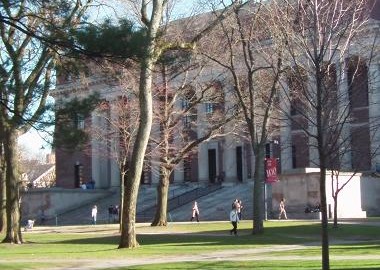American Research Universities and the Nobel Prize
Alfred Nobel was a Swedish inventor and manufacturer who became wealthy in the late 19th century from his 355 inventions, the most well known of which is dynamite. In his will in 1895, he established a significant endowment and procedure by which a set of annual international awards was to be bestowed by a Board representing Swedish and Norwegian institutions. These awards would be granted in recognition of “academic, cultural, and scientific advances that constitute outstanding contributions to humanity”.
Nobel prizes continue to be awarded in the fields of Chemistry, Physics, Physiology or Medicine, Economics, Peace, and Literature. Prizes for each of these fields aren’t necessarily granted every year if the Board determines that an award isn’t justified. Single awards are often split among multiple recipients (laureates).
A variable monetary prize ($1.2 million in 2016) accompanies each award. If there are multiple laureates, the monetary prize is divided among them at the discretion of the Board. It’s common, but not required, that laureates donate their prize money to benefit scientific, cultural, or humanitarian causes. Most Nobel Prizes in scientific and economics are awarded to individuals in association with their affiliated institution. In a majority of cases, the affiliated institution is a research university.
Last month, we posted an article titled “America’s Great Research Universities” that described how U.S. academic institutions have risen to the forefront of scientific achievement worldwide. Evidence of this status lies in the 881 Nobel Prizes that have been awarded to laureates associated with American research universities, far more than the universities of any other country. Table A below lists these American universities. They’re ranked by the number of individual and shared Nobel laureates associated with each institution.
Table A: Top 40 American Research Universities – Nobel Laureates
|
Rank |
Institution |
Laureates |
| 1 | Harvard University | 151 |
| 2 | Columbia University | 101 |
| 3 | University of Chicago | 89 |
| 4 | Massachusetts Institute of Technology | 83 |
| 5 | University of California – Berkeley | 69 |
| 6 | Stanford University | 58 |
| 7 | Yale University | 52 |
| 8 | Cornell University | 43 |
| 9 | Princeton University | 37 |
| 10 | Johns Hopkins University | 36 |
| 11 | New York University | 35 |
| 12 | California Institute of Technology | 33 |
| 13 | University of Pennsylvania | 29 |
| 14 | University of Illinois at Urbana-Champaign | 24 |
| 15 | Rockefeller University | 24 |
| 16 | University of Minnesota | 23 |
| 17 | Washington University in St. Louis | 22 |
| 18 | Carnegie Mellon | 21 |
| 19 | University of California – San Diego | 20 |
| 20 | University of Michigan – Ann Arbor | 20 |
| 21 | University of Wisconsin – Madison | 19 |
| 22 | Case Western Reserve University | 16 |
| 23 | University of California – Los Angeles | 15 |
| 24 | City University of New York | 13 |
| 25 | Duke University | 12 |
| 26 | University of Washington – Seattle | 12 |
| 27 | Northwestern University | 11 |
| 28 | University of Colorado – Boulder | 11 |
| 29 | Purdue University | 10 |
| 30 | University of California – Santa Barbara | 10 |
| 31 | University of Texas at Austin | 9 |
| 32 | Boston University | 8 |
| 33 | University of North Carolina – Chapel Hill | 8 |
| 34 | University of Rochester | 8 |
| 35 | Brown University | 7 |
| 36 | University of Southern California | 7 |
| 37 | Vanderbilt University | 7 |
| 38 | Indiana University – Bloomington | 7 |
| 39 | University of Maryland – College Park | 7 |
| 40 | University of Virginia – Charlottesville | 7 |
In addition to the 40 institutions listed above, there are 77 other American colleges and universities that have each been awarded between 1 and 6 Nobel Prizes. However, one should not assume that American research universities are so dominant that scientists and institutions in other countries haven’t also been successful in garnering Nobel Prizes through the years. The top ten non-U.S. Nobel Prize winning institutions are listed in Table B below.
Table B: Top 10 International Research Universities – Nobel Laureates
| Int’l
Rank |
Institution |
Nobel
Laureates |
| 3 | University of Cambridge – U.K. | 90 |
| 7 | University of Oxford – U.K. | 58 |
| 10 | University of Paris – France | 51 |
| 11 | University of Gottingen – Germany | 46 |
| 13 | Heidelberg University – Germany | 41 |
| 14 | Humboldt University of Berlin – Germany | 40 |
| 17 | Ludwig Maximilian University of Munich – Germany | 35 |
| 20 | ETH Zurich – Switzerland | 31 |
| 22 | University College London – U.K. | 27 |
| 23 | University of Manchester – U.K. | 25 |
The number of Nobel laureates isn’t, by itself, sufficient reason for a student to target a particular institution for admission, but it’s a meaningful factor in the identification of best-fit universities for a science-oriented student. The Nobel Prize is relevant in an assessment of the relative quality of research universities. In fact, third-party ranking services like U.S. News & World Report and Money Magazine use it as part of their calculations.
A rewarding career in science based on an education at one of America’s top-tier research universities is an excellent strategy for a motivated student with the requisite aptitude. If you feel that you are such a student, you should retain the services of IvySelect as your college admissions consulting firm to guide you through the complex admissions process.
IvySelect provides superior comprehensive and individualized counseling based on years of experience in assisting students to attain their educational goals. Some of the elite research institutions to which our students have been admitted include the eight members of the Ivy League; Penn, Columbia, Brown, Harvard, Yale, Princeton, Cornell, and Dartmouth, as well as Stanford, MIT, Chicago, Washington University in St. Louis, USC, Duke, NYU, Emory, Johns Hopkins, Swarthmore, Caltech, Virginia, Berkeley, Michigan, and UCLA.





